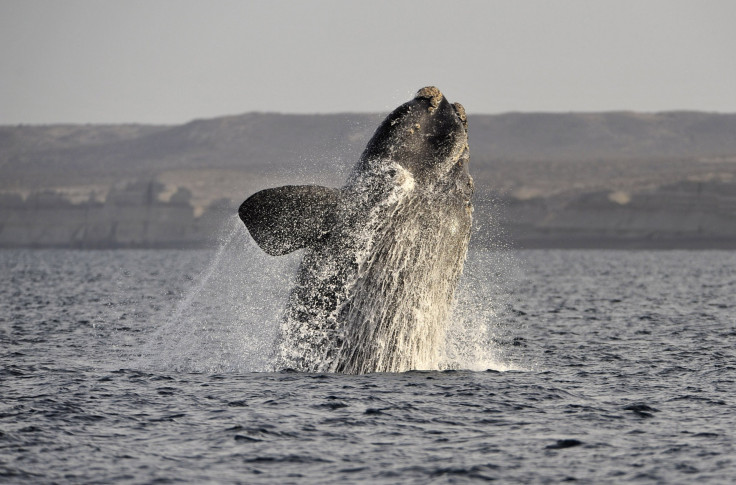Risk Of Collisions Between Whales And Ships Increased In Bering Strait: Study

When the Arctic Ocean thaws, it attracts both migrating whales and ships to the region, increasing the risk of frequent collisions between the two, according to a new study by researchers from the University of Washington, which also suggests measures that vessels can adopt to reduce harm to the animals.
As part of the study in the Bering Strait, a shallow channel between Russia and Alaska that connects the Pacific and Arctic oceans, researchers used underwater microphones to track whales by their sound for three years between 2009 and 2012. The recordings revealed an increasing number of both Arctic and sub-Arctic whales traveling through the narrow choke point, while also picking up sounds from ships that used the ice-free summers to travel through the channel.
“Marine mammals rely primarily on sound to navigate, to find food and to find mates. Sound is their modality,” Kate Stafford, an oceanographer at the University of Washington, said in a statement. “If we increase the ambient sound level, it has the potential to reduce the communication range of cetaceans and all marine mammals.”
According to the researchers, the recordings showed that some whales that are usually found farther south have begun migrating seasonally through the Bering Strait. The researchers also detected large numbers of sub-Arctic humpback, fin and killer whales traveling north through the region to feed in the biologically-rich Chukchi Sea.
“These animals are expanding their range,” Stafford said. “They’re taking advantage of regions in seasons that they may not have previously.”
The Bering Strait, which was used by ancient humans to travel from Russia to North America, is 58 miles wide with a maximum depth of 160 feet, with about one-third of its span lying in U.S. waters while the rest falls under Russian territory. The two coasts are quite different, according to Stafford, who has suggested an international collaboration to better understand the region's ecology.
To avoid collisions between whales and ships, Stafford also suggested slowing down ship speeds in the Bering Strait and reducing motor noise. The study also recommended that because bowhead whales tend to travel up the U.S. side on their way north in the spring and on the Russian side on their way back in the fall, ships should follow the opposite system to reduce harm to the whales.
© Copyright IBTimes 2025. All rights reserved.






















